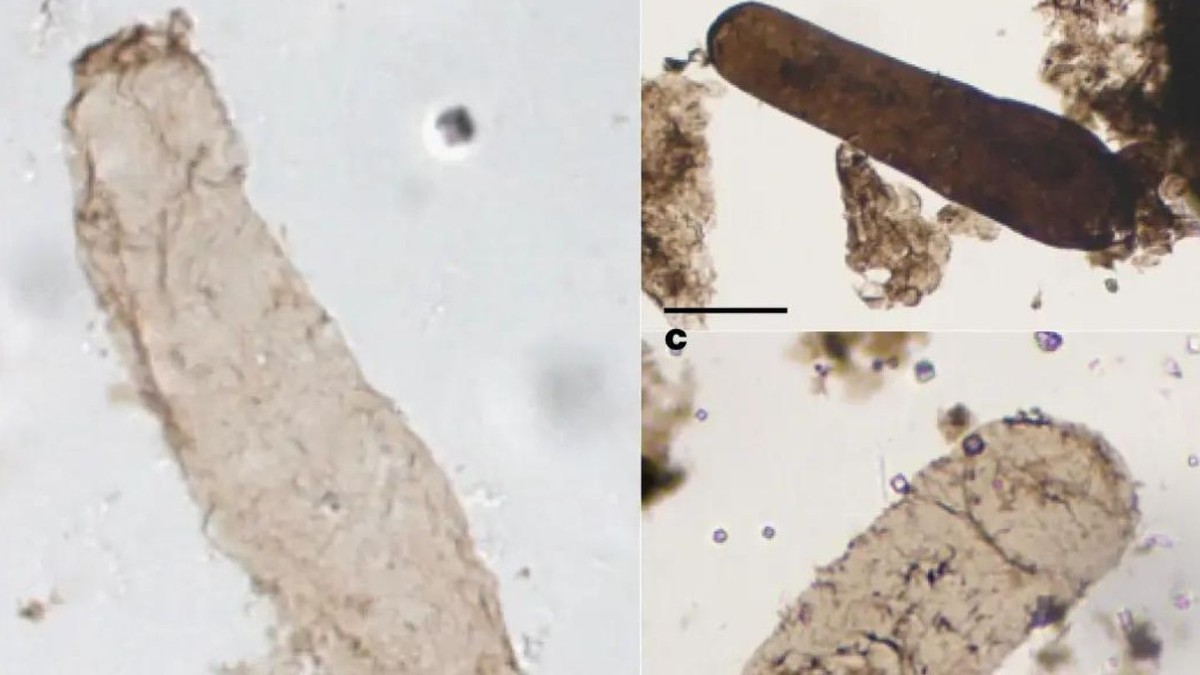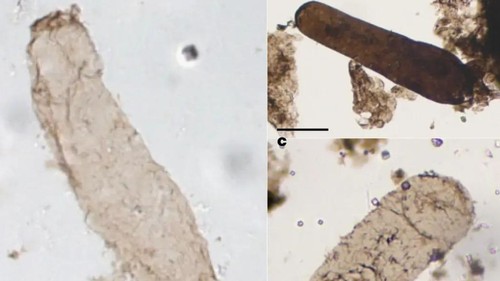
Scientists Just Made a 1.75 Billion-Year-Old Discovery About the Origin of Life
Newly-discovered 1.75 billion-year-old bacteria fossils shed new light on the Great Oxygenation Event, which led to the emergence of complex life.
Scientists Just Made a 1.75 Billion-Year-Old Discovery About the Origin of Life
Newly-discovered 1.75 billion-year-old bacteria fossils shed new light on the Great Oxygenation Event, which led to the emergence of complex life.MG
By Mirjam Guesgen
January 4, 2024, 10:19am

IMAGE: DEMOULIN, LARA ET. AL.
The origins of life on Earth are still mysterious, but scientists have just taken another step toward understanding how and when complex organisms emerged on our planet.
As reported in a new study, scientists have found the oldest direct evidence of oxygenic photosynthetic structures—ones capable of turning sunlight, water and carbon dioxide into energy and oxygen—inside fossilized bacteria from Australia and Canada. The fossils are 1.75 billion years old, pushing back the undisputed origin of photosynthesis as we know it by at least 1.2 billion years. This key process helped life along by pumping the atmosphere full of oxygen.
The current scientific understanding is that photosynthesis evolved some three-and-a-half billion years ago but that it was a primitive kind that didn’t produce oxygen (anoxygenic photosynthesis). Today, all but a few algae, bacteria and plants that photosynthesize make oxygen. But when that shift first happened is unclear.
Scientists think cyanobacteria were some of the first organisms to perform oxygenic photosynthesis using structures inside their bodies called thylakoid membranes—dense stacks of protein and fat where photosynthesis takes place. And when they did, they helped fill Earth’s atmosphere full of the gas in what’s known as the Great Oxygenation Event.
“Their production of oxygen led to accumulation of oxygen and profoundly modified the chemistry of the Earth’s oceans and atmosphere, and the evolution of the biosphere, including complex life,” study co-author Emmanuelle Javaux from the University of Liège in Belgium told Motherboard in an email.
These cyanobacteria also later become the main sunlight-factories we see in organisms today, or chloroplasts. “The mechanism of photosynthesis inside cyanobacteria is very sophisticated,” said Robert Blankenship, who studied the origin and evolution of photosynthesis but wasn’t involved in this research. “It’s remarkable that it’s really almost the same as what goes on in plants nowadays. That process was, in a sense, perfected a very long time ago,” the distinguished professor in arts and sciences emeritus at Washington University in St. Louis told Motherboard.
Scientists had previously identified thylakoid membranes in fossils dating from 150- up to 550 million years ago. There’s also older, indirect evidence of oxygen-making photosynthesis from genetics and chemical studies.
In this latest study, published Wednesday in Nature, researchers found the oldest direct evidence, aka thylakoid membranes, in fossils from the McDermott Formation in Australia dating back some 1.75 billion years, as well as others from the Grassy Bay Formation in Arctic Canada (around one billion years old).
It’s a significant jump in time, but not surprising, says Blankenship, since there are very few fossilized bacteria. “It’s a problem with the preservation of the fossils being really difficult and there not being very many of them," he said.
The difficulty comes down to several factors. For one, squishy organisms like bacteria—that don’t contain hard substances like minerals or bones—don’t stick around in the fossil record very well. Second, the fossils are tiny—less than a millimeter in size—and the structures inside them even smaller, so they’re difficult to find amongst the layers of compressed sediment. What’s more, as that sediment and rock compresses over millions of years, it can destroy the very structures researchers are seeking. This might have happened for other fossils Javaux and her team analyzed from the Democratic Republic of the Congo, where they didn’t find any thylakoids.
The structures they did find are only about as long as a human hair is wide and could only be viewed by casting the bacteria in resin, slicing them super thin, and then looking at them through an electron microscope.
The find is significant, said Javaux, because it helps scientists understand how complex life evolved on earth. Blankenship goes further, saying that understanding how photosynthesis came about here can help us look for evidence of this life-giving and world-changing process on other planets. He for example collaborated with NASA to theorize what photosynthesis could look like on planets whose stars give off different wavelengths of light to our own.
But many questions still remain, including a key one about whether oxygen-making photosynthesis evolved before, around the same time, or after the Great Oxygenation Event. It may be that it evolved before and it took a while for oxygen to build up, explained Blankenship. Further fine-detailed analysis, like they did in this study, of older microfossils might hold the answers, Javaux said.